According to researcher Tim Doling, in 1872, Mr. Eiffel's representative office opened in Saigon, and the Mong Bridge across Tau Hu Canal connecting District 1 and Khanh Hoi (now District 4) was the first construction. Mong Bridge is considered the only remaining "Eiffel" bridge in Asia.

Sketch by Architect Nguyen Khanh Vu
Mong Bridge is 128 m long, 5.2 m wide (pedestrian sidewalk is 0.5 m wide), steel frame, in the style of European bridges in the late 19th century. This was one of the most important bridges in Saigon at that time.
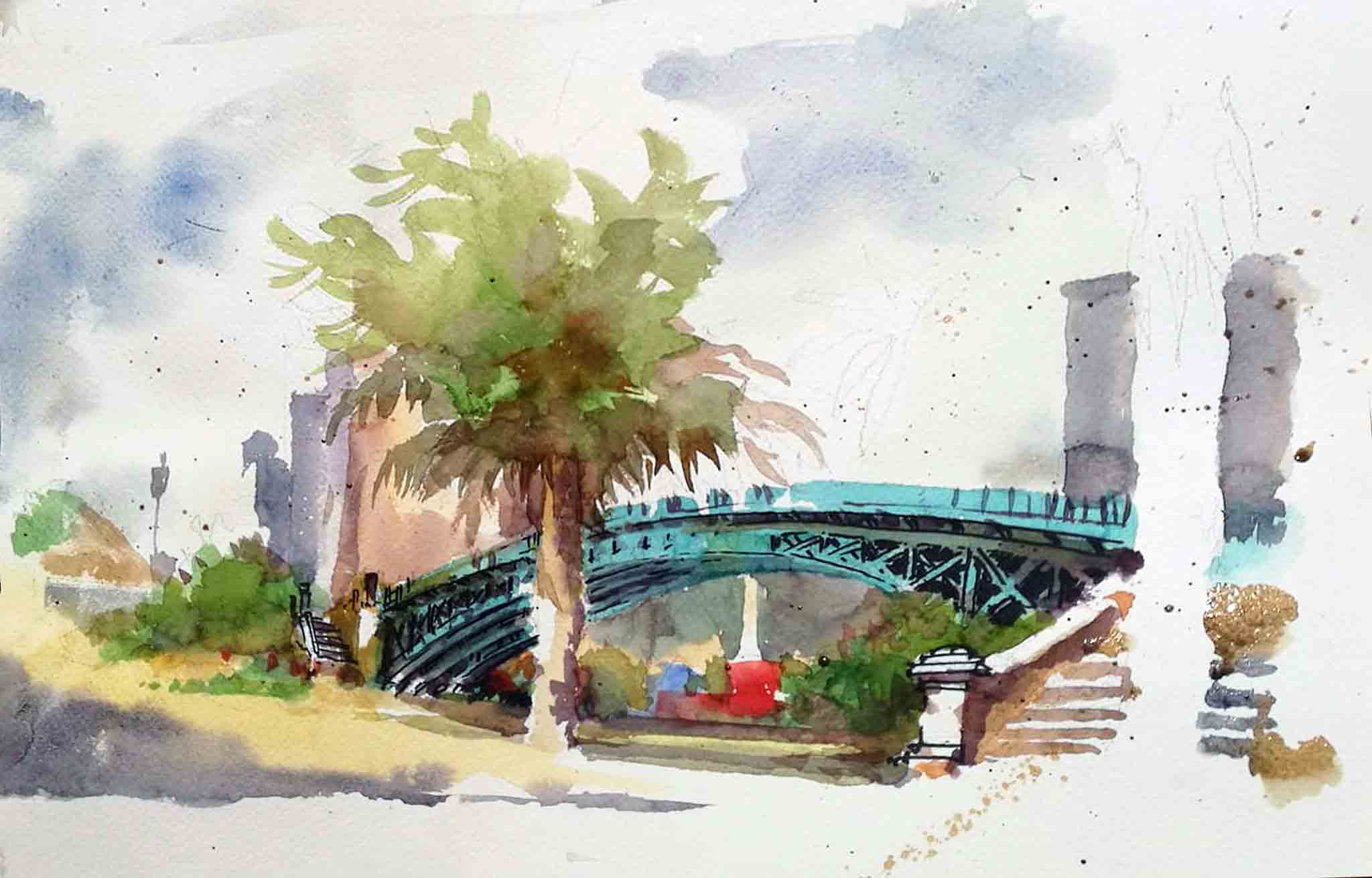
Sketch by Architect Phan Dinh Trung
Later, when constructing the Saigon River Tunnel and the East-West Highway, the bridge was dismantled and then reassembled almost as it was, but its function was changed to a pedestrian bridge, repainted (turned to blue), reinforced with foundation pillars and added artistic lighting. Currently, the bridge is a popular wedding photography and check-in spot for young people.
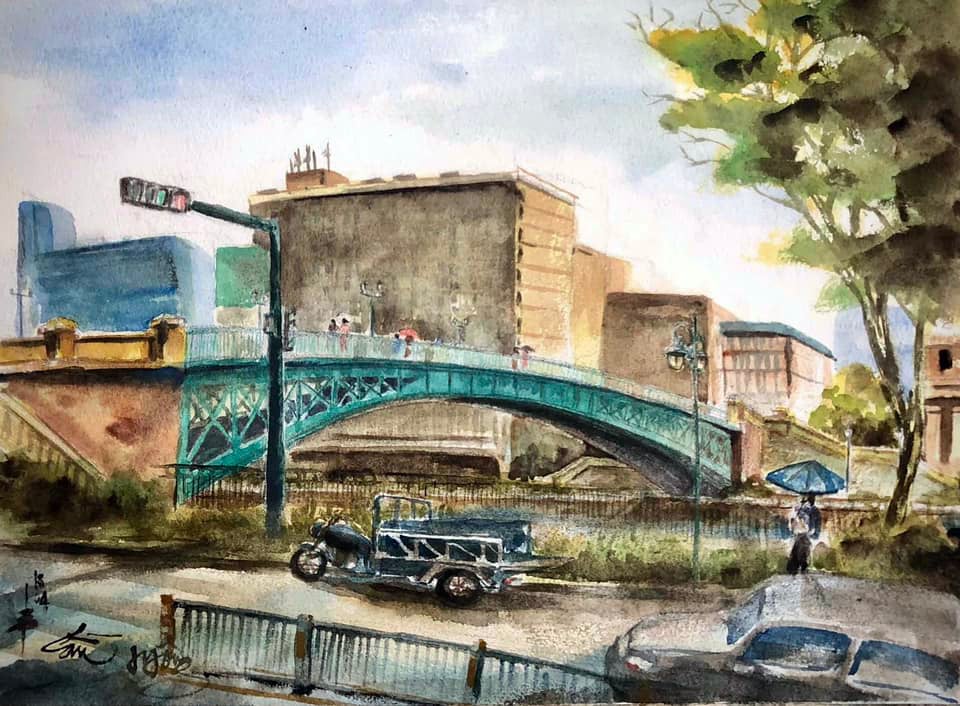
Sketch by Architect Nguyen Van Thien Quan
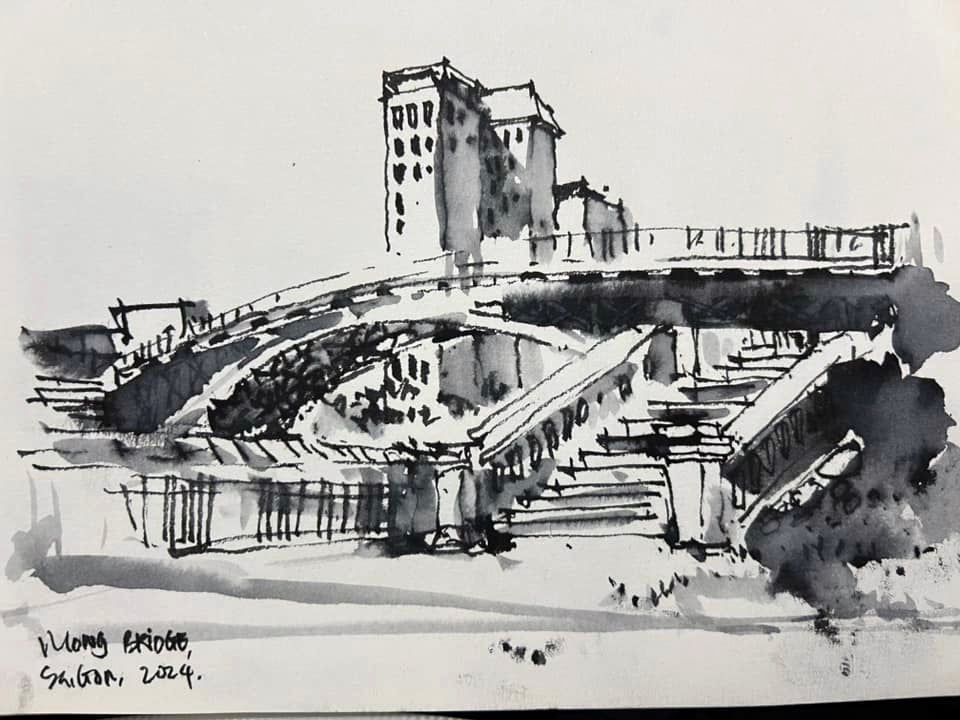
Sketch by Architect Phan Dinh Trung
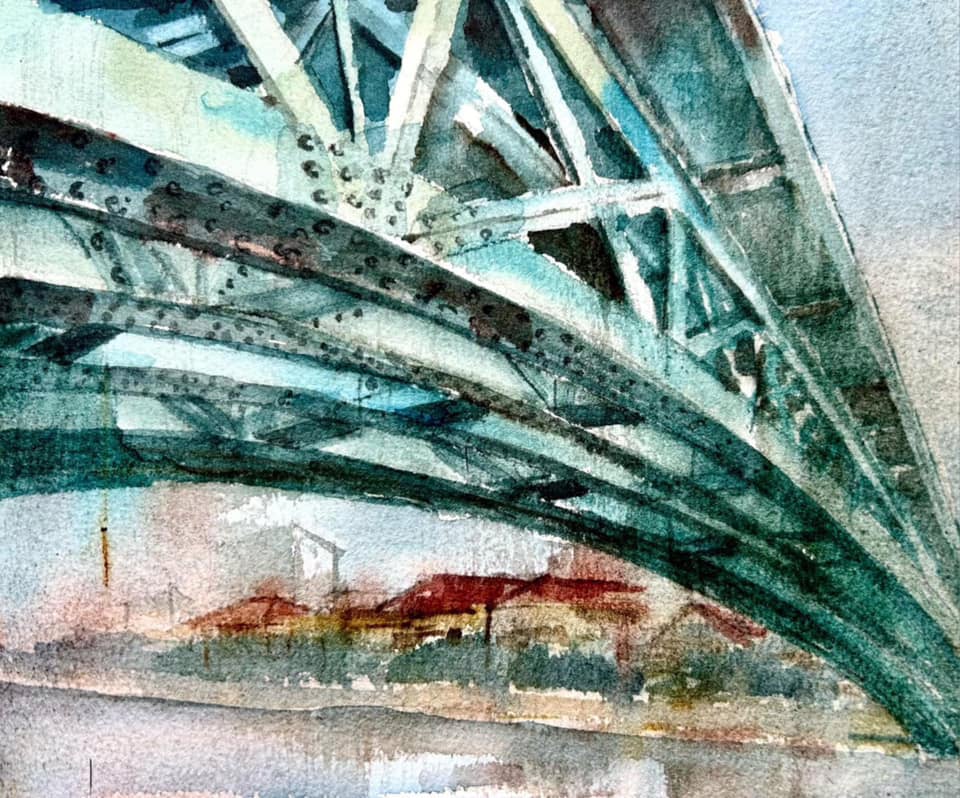
Sketch by Architect Hoang Huu Dat

Structural details of Mong bridge - sketch by architect Linh Hoang
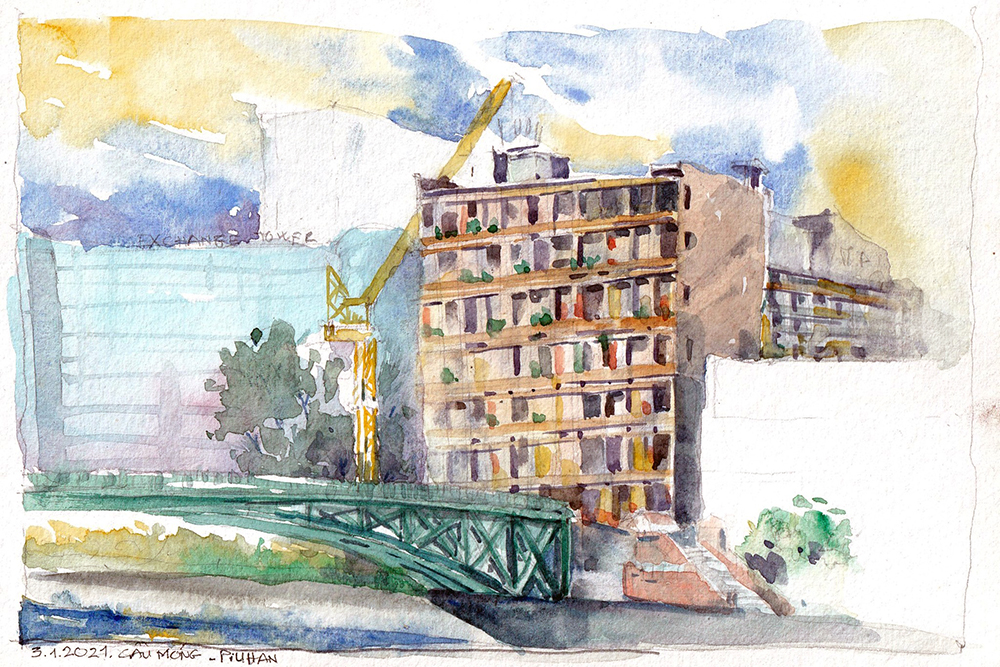
Sketch by Architect Pham Minh Duc
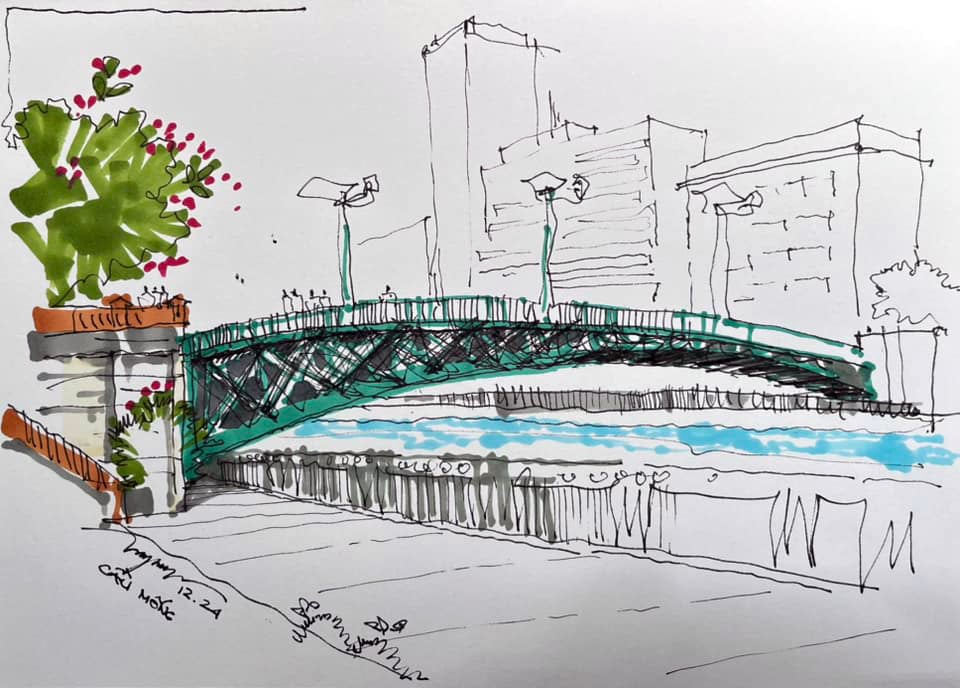
Sketch by Architect Tran Thai Nguyen
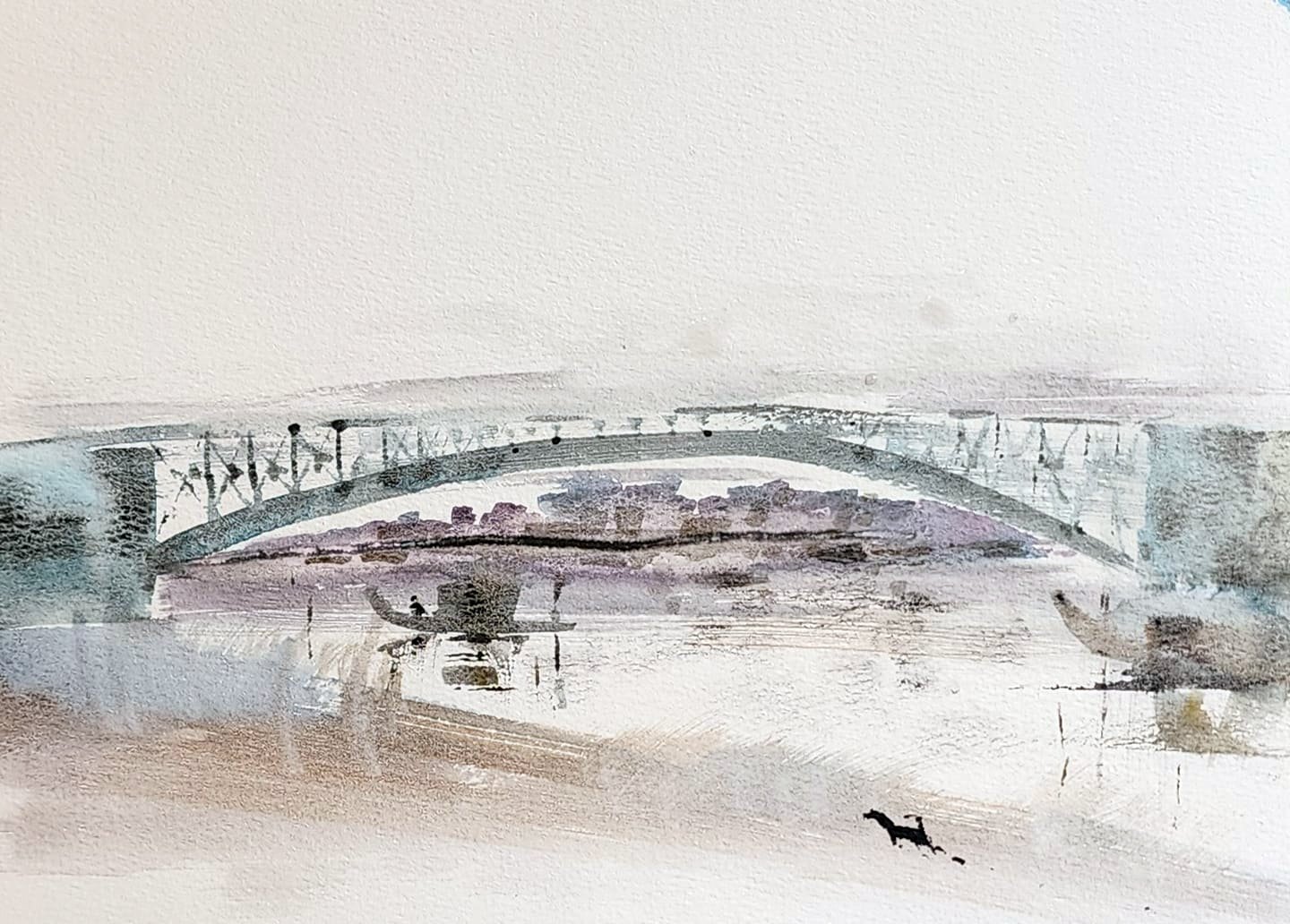
Sketch by Architect Phung The Huy
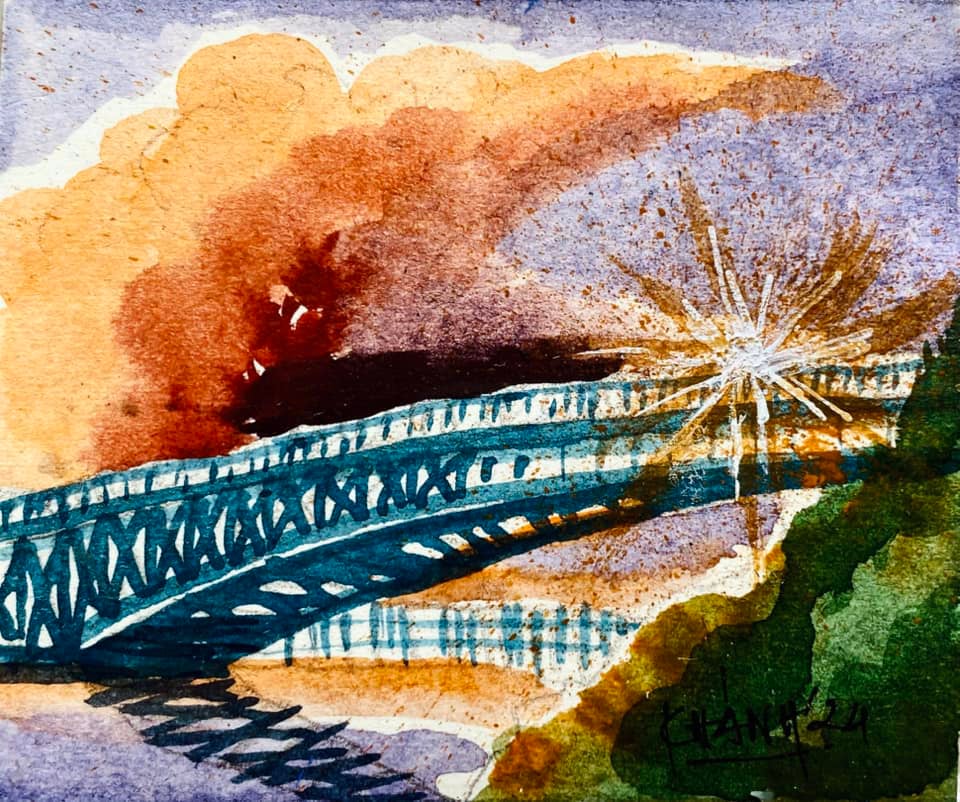
Sketch by designer Le Quang Khanh
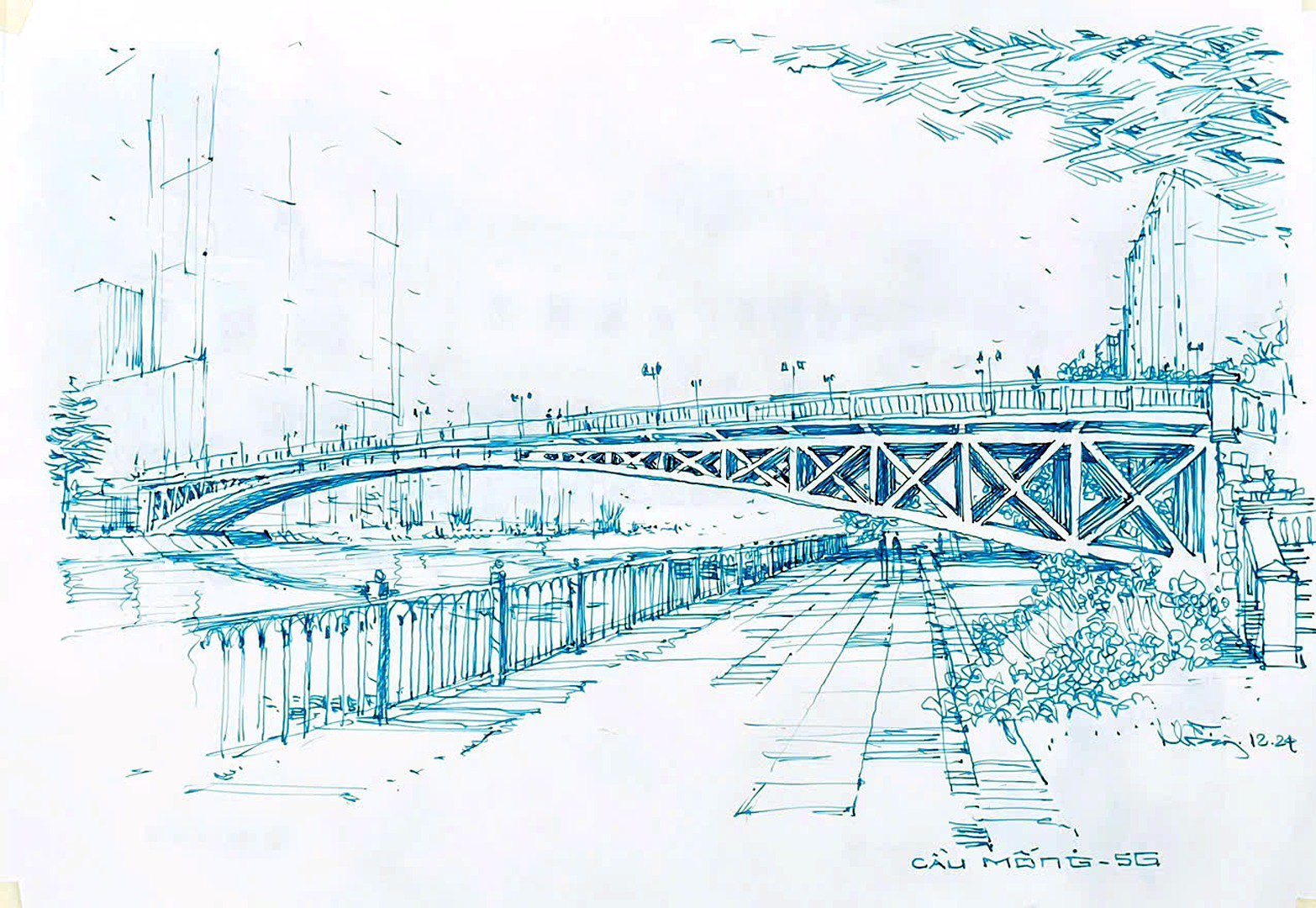
Sketch by Architect Tran Xuan Hong.
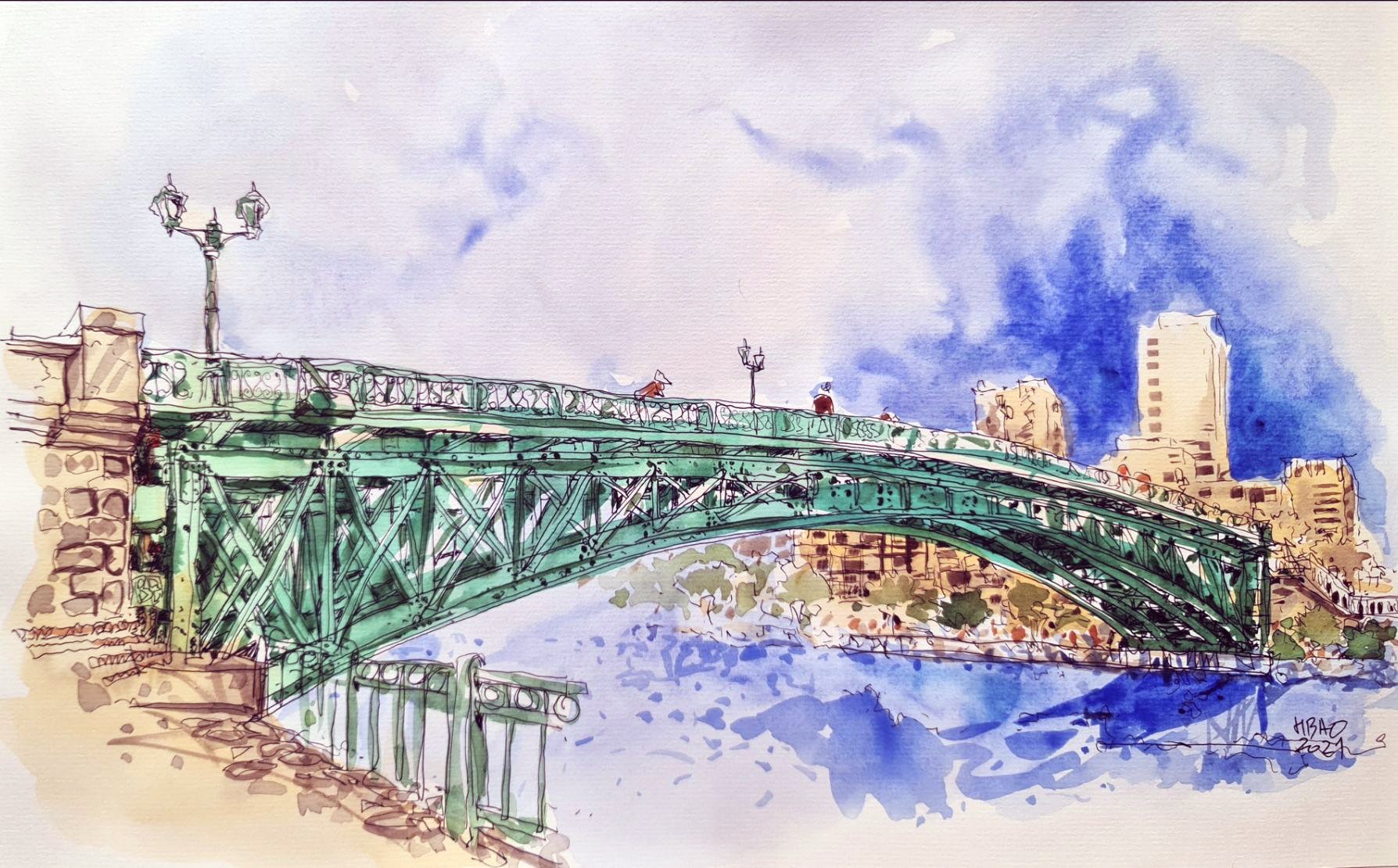
Sketch by Architect Bui Hoang Bao
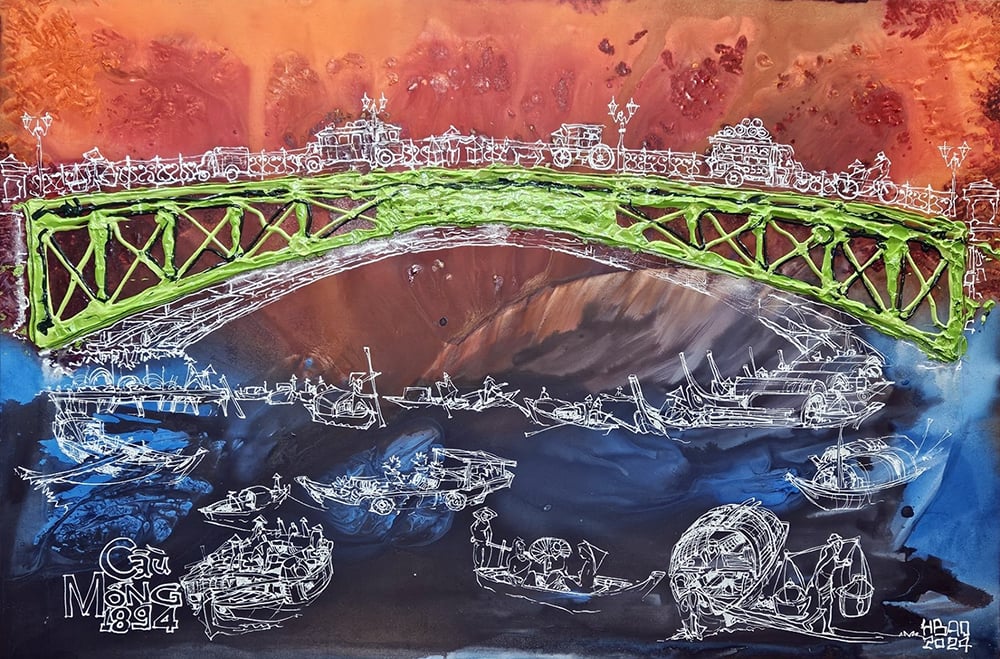
Painting by Architect Bui Hoang Bao

Sketch by artist Tran Binh Minh
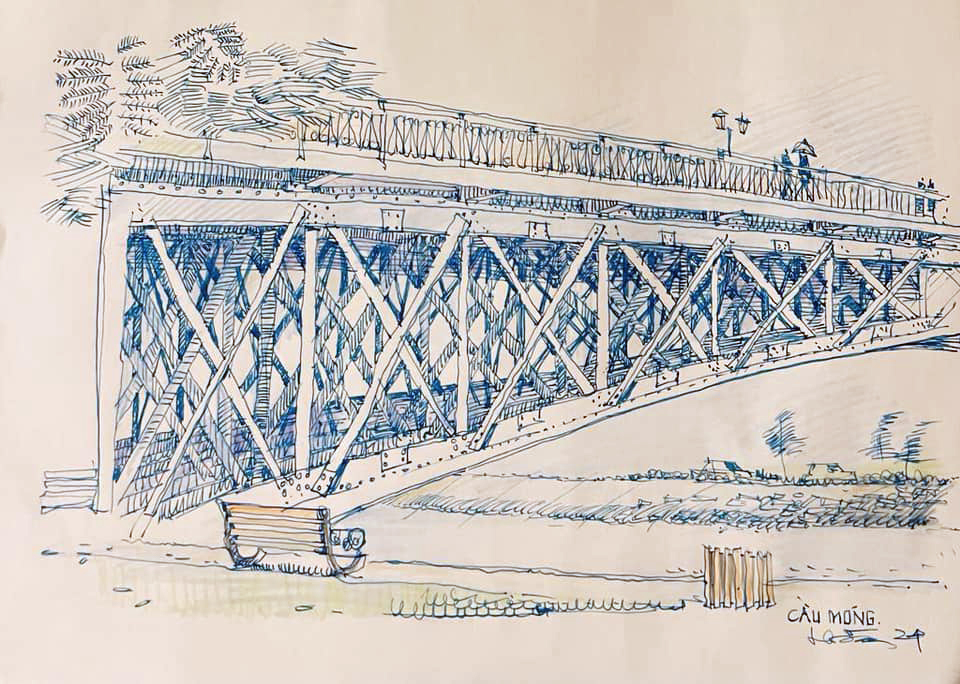
Sketch by Architect Tran Xuan Hong.
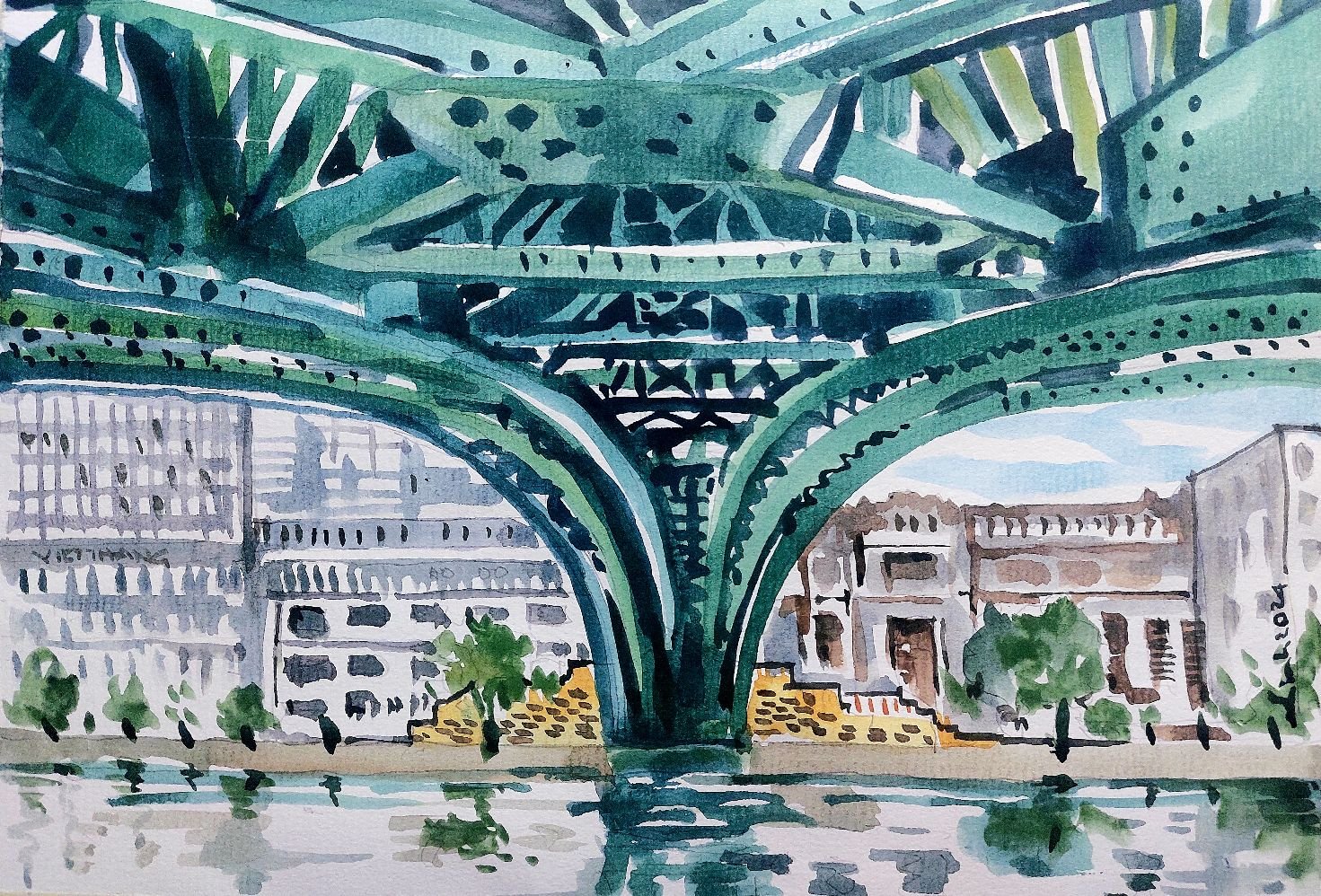
View from under Mong bridge - sketch by architect Linh Hoang
(*): Because of its arched shape resembling a rainbow across the river, the French call it Arc-en-ciel (meaning rainbow), and the Vietnamese call it Mong Bridge. Built by order of the French company Messageries Maritimes (Maritime Transport), the bridge is also known as Pont des Messageries maritimes.
Source: https://thanhnien.vn/goc-ky-hoa-cau-eiffel-duy-nhat-con-sot-lai-o-chau-a-185241214204620362.htm


![[Photo] Prime Minister Pham Minh Chinh chairs meeting to discuss tax solutions for Vietnam's import and export goods](https://vstatic.vietnam.vn/vietnam/resource/IMAGE/2025/4/10/19b9ed81ca2940b79fb8a0b9ccef539a)
![[Photo] Phuc Tho mulberry season – Sweet fruit from green agriculture](https://vstatic.vietnam.vn/vietnam/resource/IMAGE/2025/4/10/1710a51d63c84a5a92de1b9b4caaf3e5)





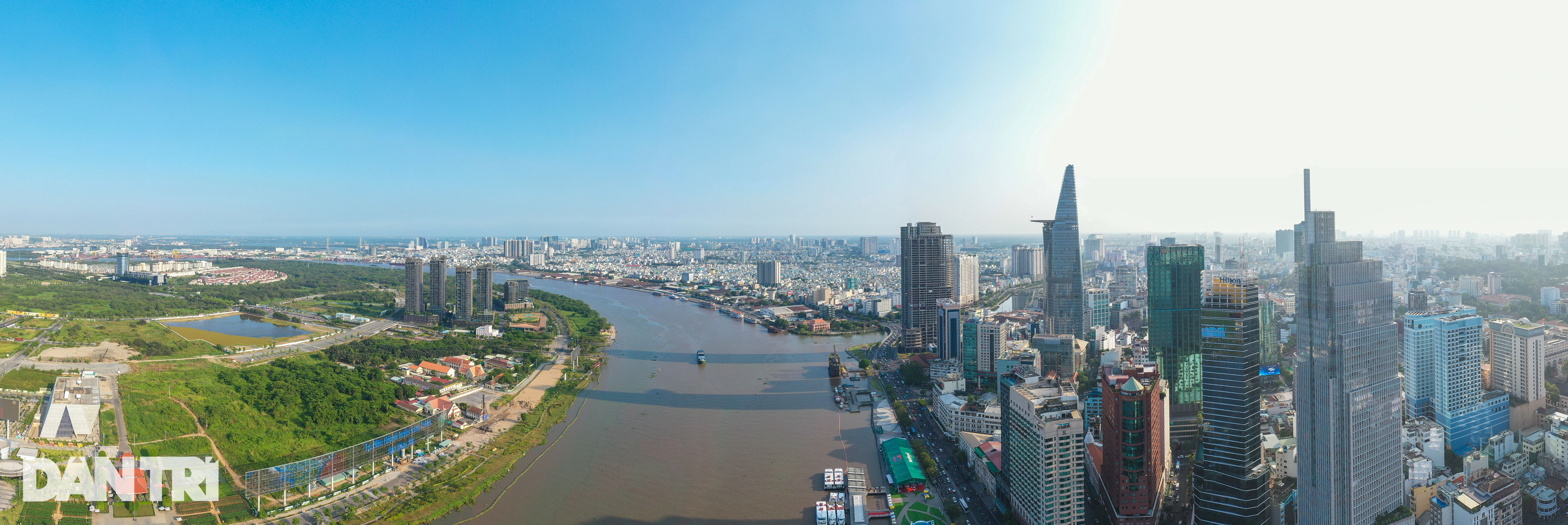


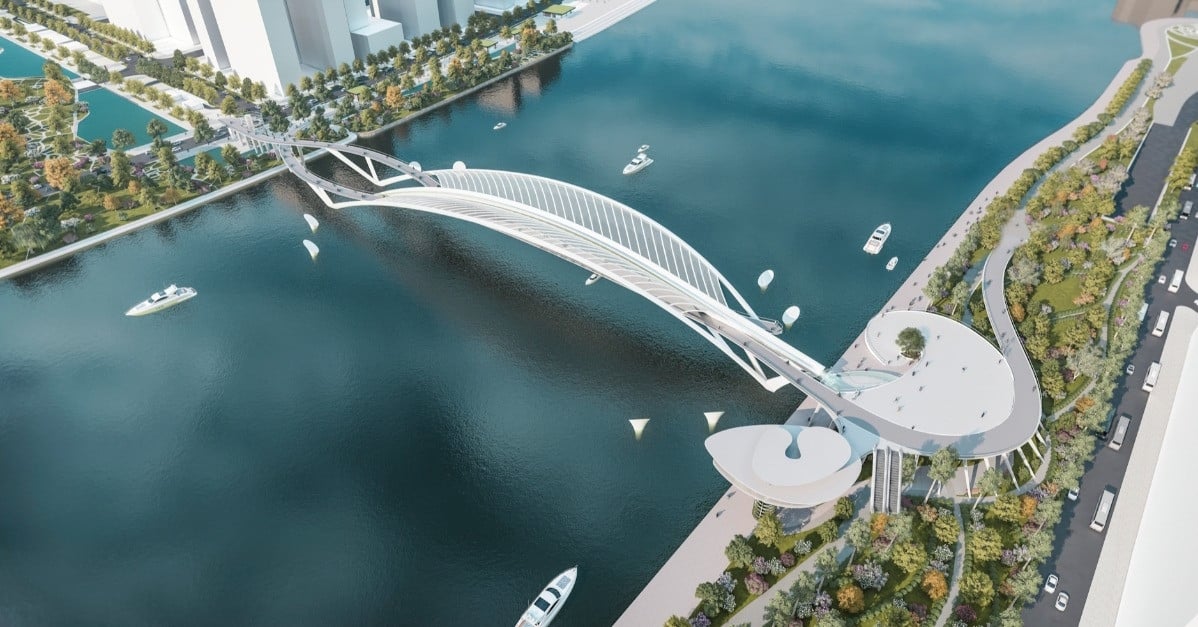




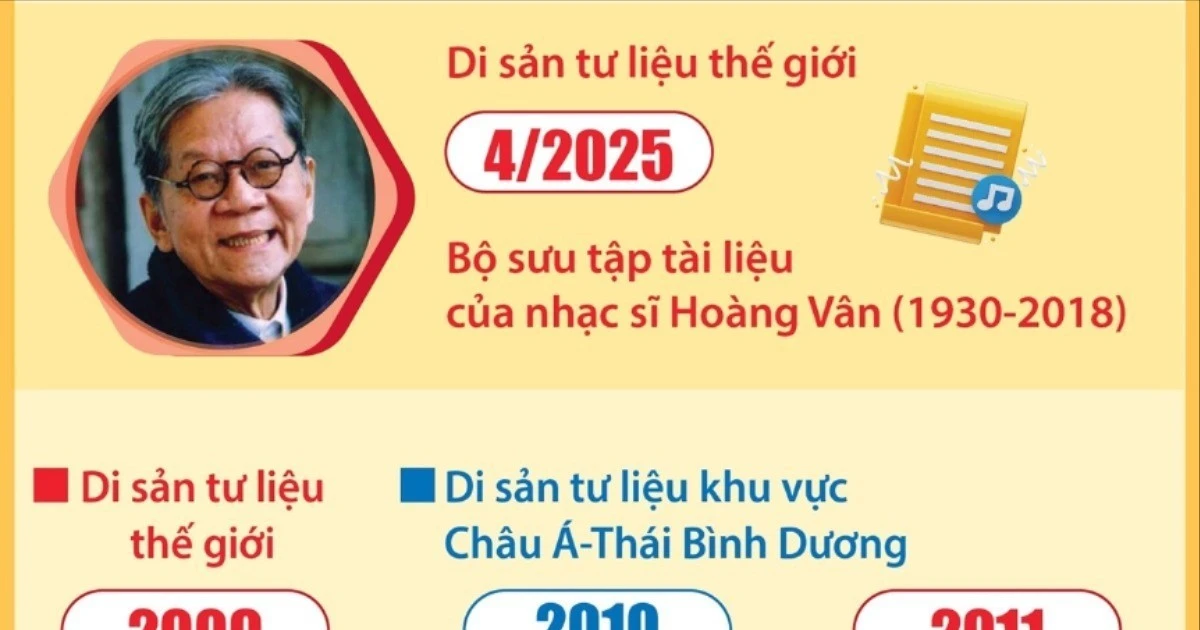
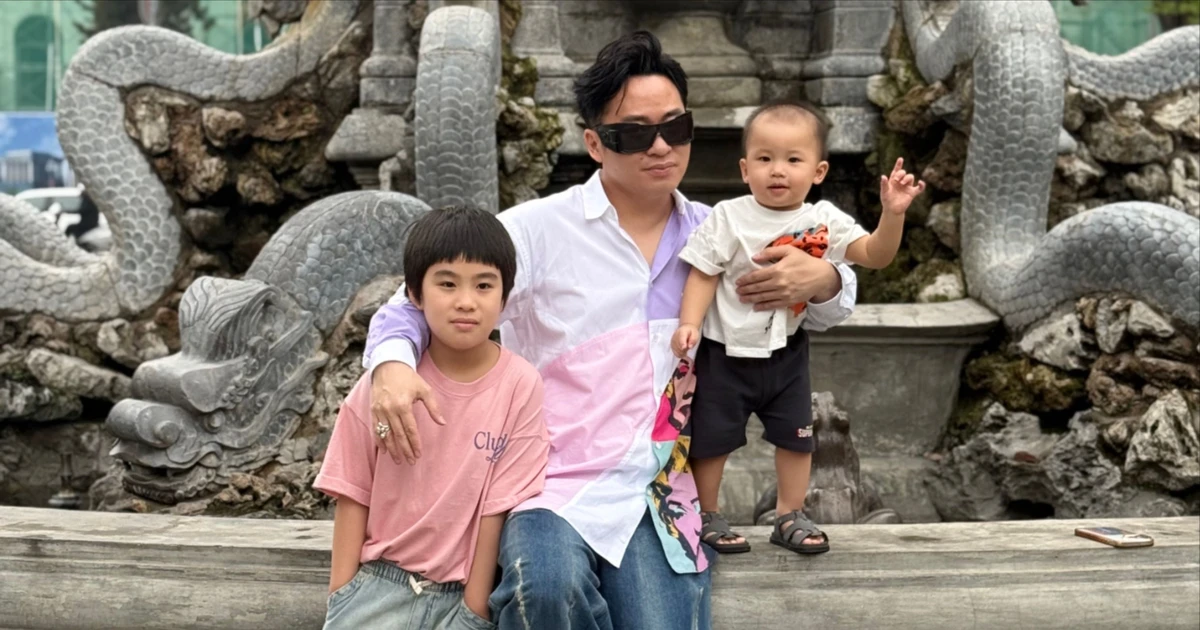
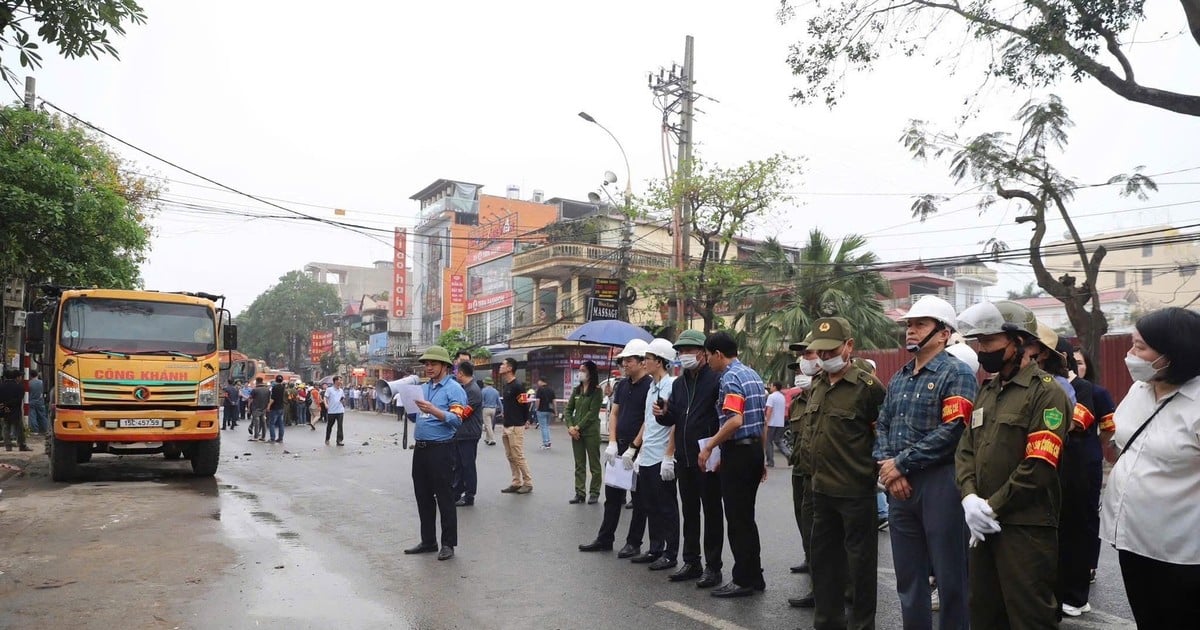

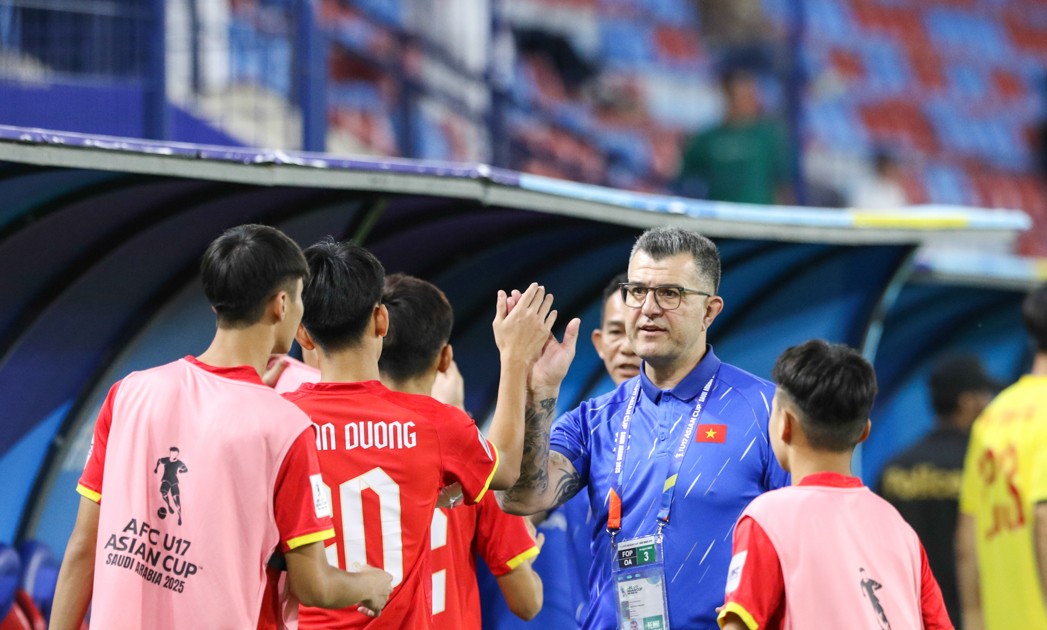




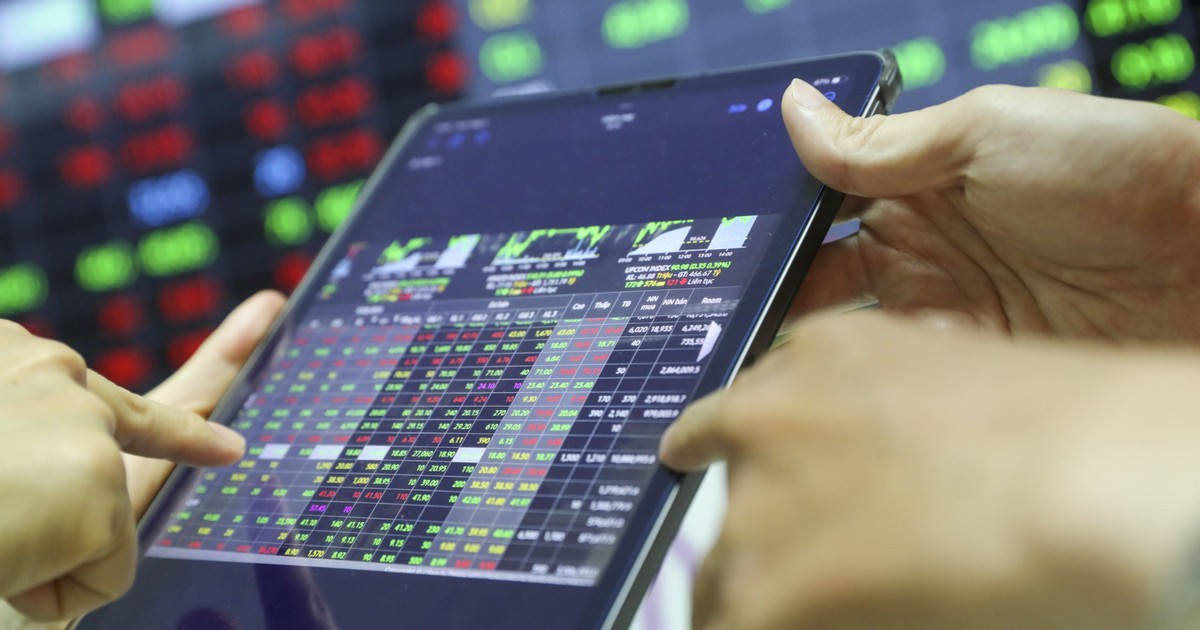

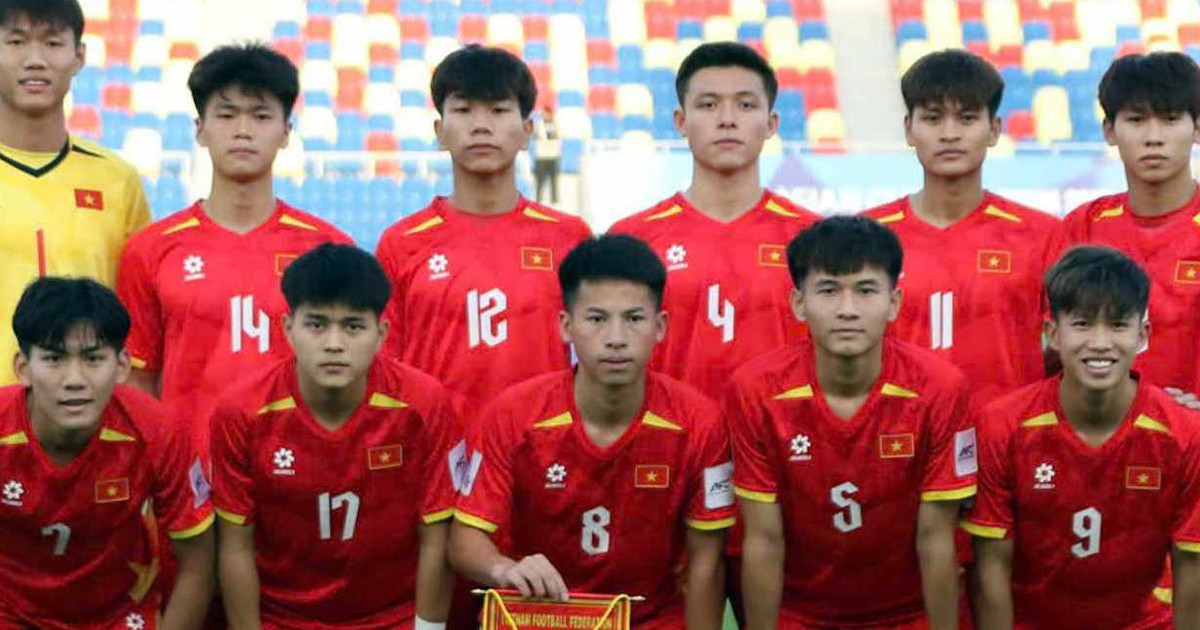







































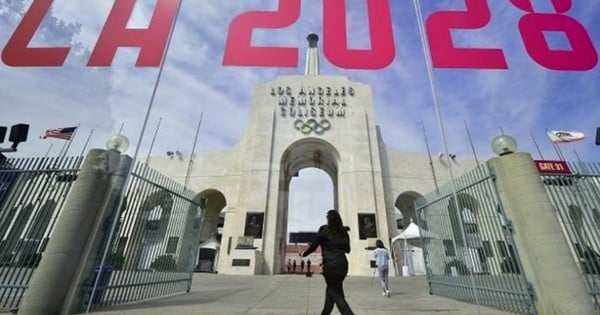





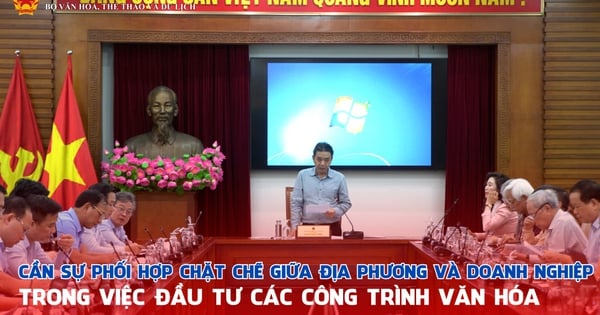

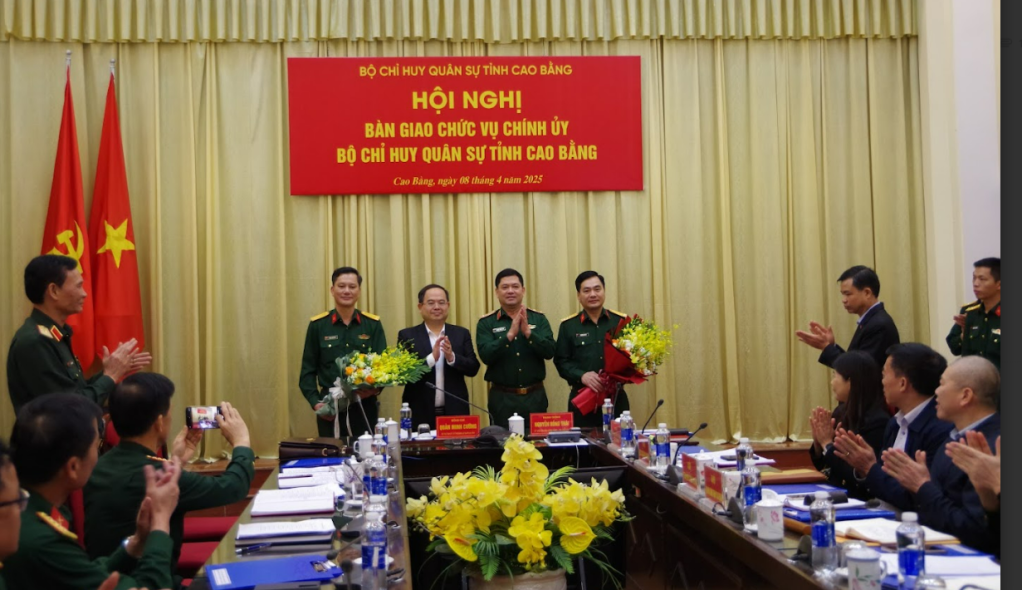

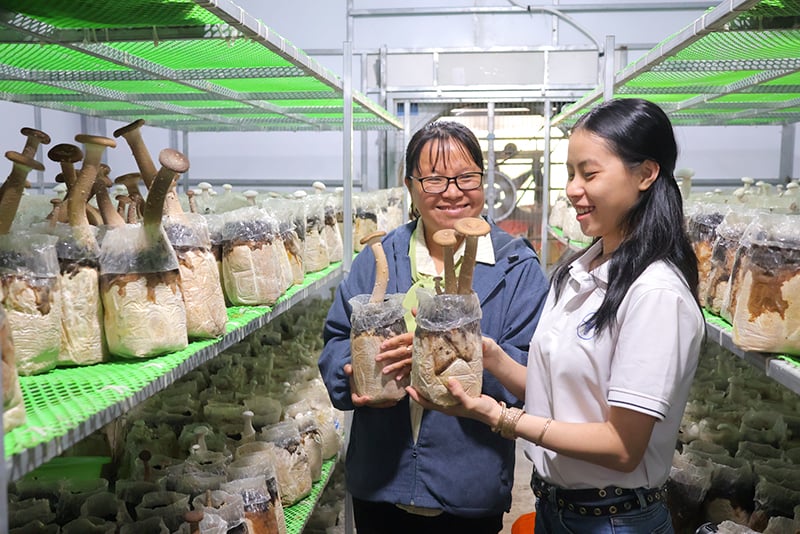


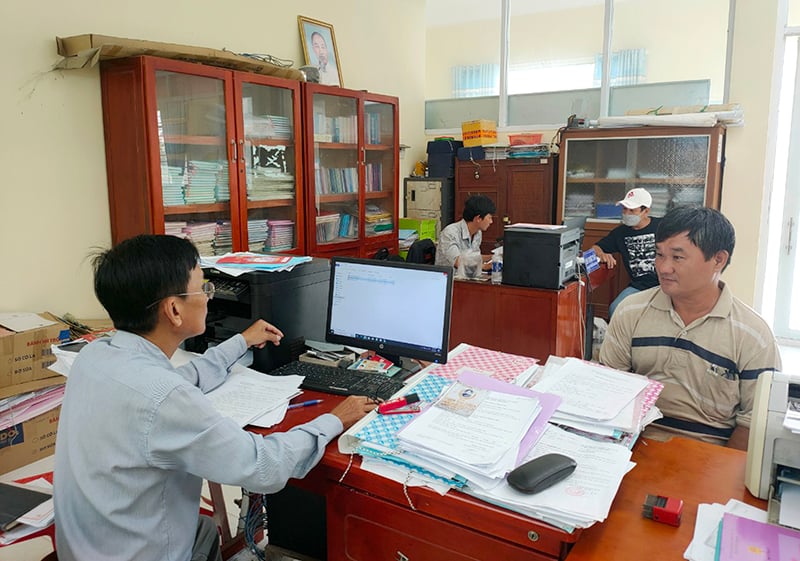
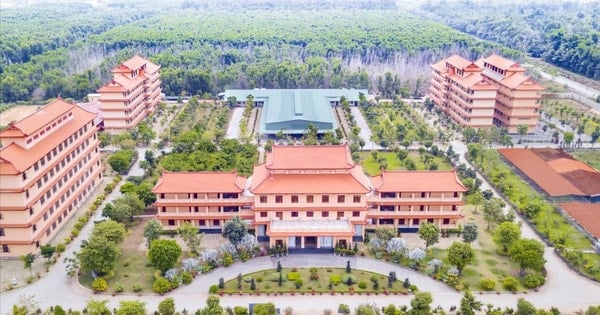









Comment (0)